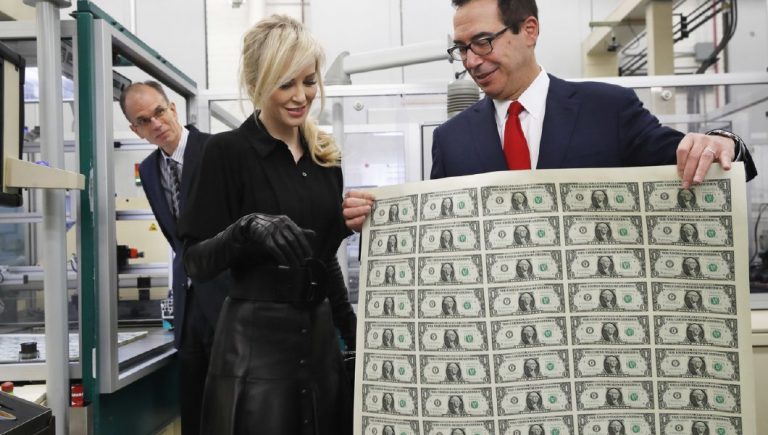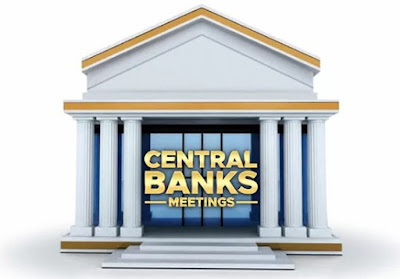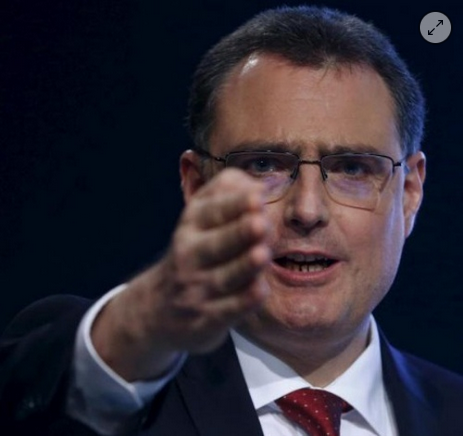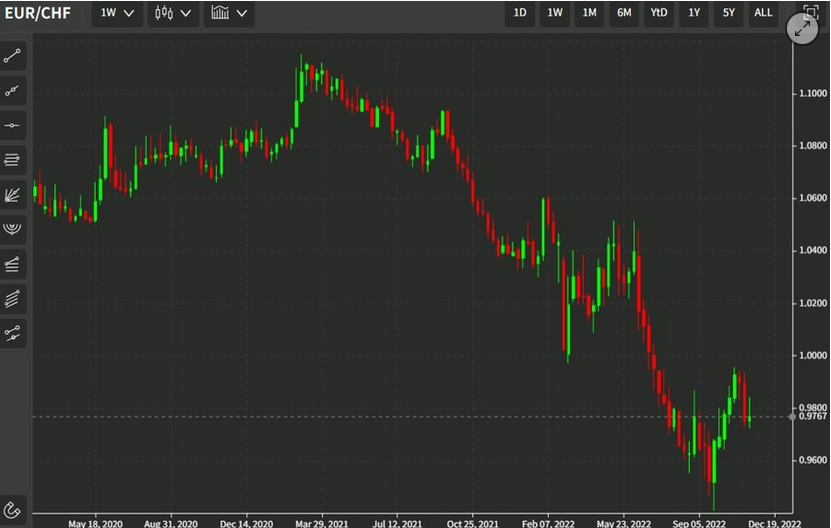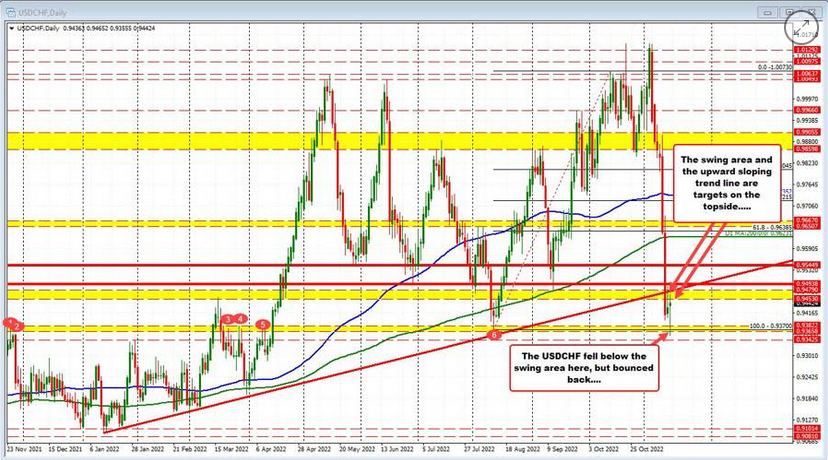Something for NothingThe world is full of bad ideas. Just look around. One can hardly blink without a multitude of bad ideas coming into view. What’s more, the worse an idea is, the more popular it becomes. Take Mickey’s Fine Malt Liquor. It’s nearly as destructive as prescription pain killers. Yet people chug it down with reckless abandon. |
 Looking at the expression of this Mickey’s Malt Liquor tester one might initially get the impression that he is disappointed. - Click to enlarge We assure you that is not the case – this is actually his happy face, he is probably just about to enter Nirvana. Countless taste tests prove it, see this comparison of the “entire bottom shelf” of malt liquors, or these cost-conscious routiniers. Not to forget, it comes either in cans or in shatterproof plastic bottles. |
| Or consider central banking. Has any other single idea extracted more wealth from the lowly wage earner? The Federal Reserve’s backdoor taxation program has snookered honest hard-working Americans for over 100 years.
Why is it that bad ideas are often received more favorably than good ideas? Perhaps, it is because bad ideas generally promise something for nothing. That one can live off the coerced philanthropy of one’s neighbors. That one can get more out of one’s retirement fund than one puts in. Promises of fruits without labors are fantastical. They’re also the surefire way for politicians to get elected. How can it possibly be a good idea to spend more and tax less, and fill the gap with more and more debt? From a sound fiscal management perspective this is a terrible idea. Certainly, a policy to spend less and tax less would be a much sounder idea. But for a politician looking to win votes, promising something for nothing is the only way to go. This is because people often do the exact opposite of what they say. People may say they’re against bigger government. But these same people will always vote in their self-interest, especially if they believe they’ll get something for nothing. That is, they’ll always vote for promises of government handouts if they believe they won’t have to pay for them. |
US Total Credit Market Debt, 1968 - 2018 US debtbergs: total credit market debt as of Q2 2017 and total federal debt as of Q3 2017. - Click to enlarge The sustainability of these large debts is rather doubtful (economic output grows at a much slower pace). |
Self-CannibalizationThe fact is the present American system of democratic mob rule has devolved to self-cannibalization. By consuming itself, the nation can temporarily live beyond its means. This dynamic is best observed by looking at the growth in federal debt since the turn of the century. When Y2K came and went without a hitch the federal debt was about $5.6 trillion. Today it is over $20.6 trillion. In just 18 years the federal debt has increased by over 265 percent. Over this same period, real U.S. gross domestic product has only increased from about $12.5 trillion to about $17 trillion – or roughly 36 percent. This, as far as we can tell, is a recipe for disaster. Still, this isn’t the half of it… You see, this growth in national debt relative to national income coincided with a corresponding growth in something for nothing policies. This growth in national debt relative to national income also occurred during a period of especially cheap credit. Cheap credit, however, can also give way to expensive credit. And as interest rates rise, the net interest payments to service the debt also rise. For example, net interest payments on the national debt for fiscal year 2017 were about $266 billion, while the yield on the 10-Year Treasury note was 2.8 percent. Assuming the 10-Year Treasury note yield increases to 4 percent by fiscal year 2026, it is projected that $787 billion of the government’s budget will have to be diverted to debt service. This would nearly double the percent of the budget allocated to paying interest from 6.5 percent to 12.2 percent. But what if the 10-Year Treasury note yield rises to a much higher level than 4 percent? What if it jumps to over 15 percent like it did in 1981? That would likely mean the entire budget, and then some, would be needed just to service the debt. This is where self-cannibalization ultimately leads. In the meantime, something for nothing bad ideas continue to be brought forth as solutions, with varying degrees of reception… |
Treasury Bond Yields, 1940 - 2018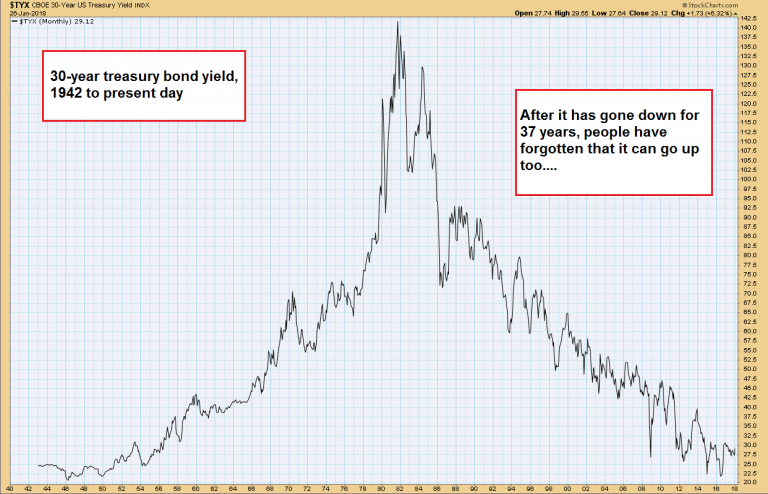 30 year bond yield since 1942: the sample size under the modern fiat money system is as small as it gets, but this chart suggests that interest rates are likely subject to very long term cycles. - Click to enlarge Whether the long term downtrend is already over is not certain yet, but if it is, the situation for the mountains of debt shown above will become quite problematic . |
The Donald Saves the DollarMany years ago, in an article titled Chasing the Wild Goose in Davos, we provided a detailed account of the yearly pilgrimage of the world’s best and brightest – and richest – to the World Economic Forum in Davos, Switzerland. If you are unfamiliar with the event or need a brief refresher, we suggest you give it a read. We mention this because the 2018 World Economic Forum took place this week. We weren’t invited this year. Nonetheless, from what we gather, Treasury Secretary Steven Mnuchin – a Goldman guy – dropped a turd in the swimming pool when he pitched his latest something for nothing strategy. On Wednesday, with a smile and a straight face, he explained how a weak dollar is great boon to the American economy:
|
Treasury secretary Steven Mnuchin holding a fistful of dollars. His wife seems happy enough, but the unnamed bureaucrat in the background looks as if he’s afraid Mnuchin might make off with the freshly printed sheet (this picture definitely calls for a caption contest…) |
| Following Mnuchin’s remarks, the dollar furthered its declining trend – sliding to its lowest value in three years as measured by the Bloomberg Dollar Index. These remarks also put Mnuchin at great odds with his international counterparts, who outnumber him by far. That was when the sharks began to circle…
On Thursday morning, IMF Managing Director Christine Legarde requested clarification. Then ECB President Mario Draghi expressed concern that Mnuchin was violating an international agreement not to talk down one’s currency. Hence, Mnuchin was forced to restate his position:
Sensing blood in the water, Bridgewater Associates Chairman Ray Dalio – a man who misconstrues his bank account with his IQ – went in for the kill with a “five point” Linkedin post titled, Mnuchin’s Comment on the Dollar. Then, with Mnuchin gushing blood in foreign waters and encircled by hostile great whites, something remarkable happened. Mnuchin’s boss, The Donald, also in Davos, came to his rescue:
At the precise moment The Donald spoke, the dollar ticked up. |
US Dollar Index, Nov 2016 - Feb 2018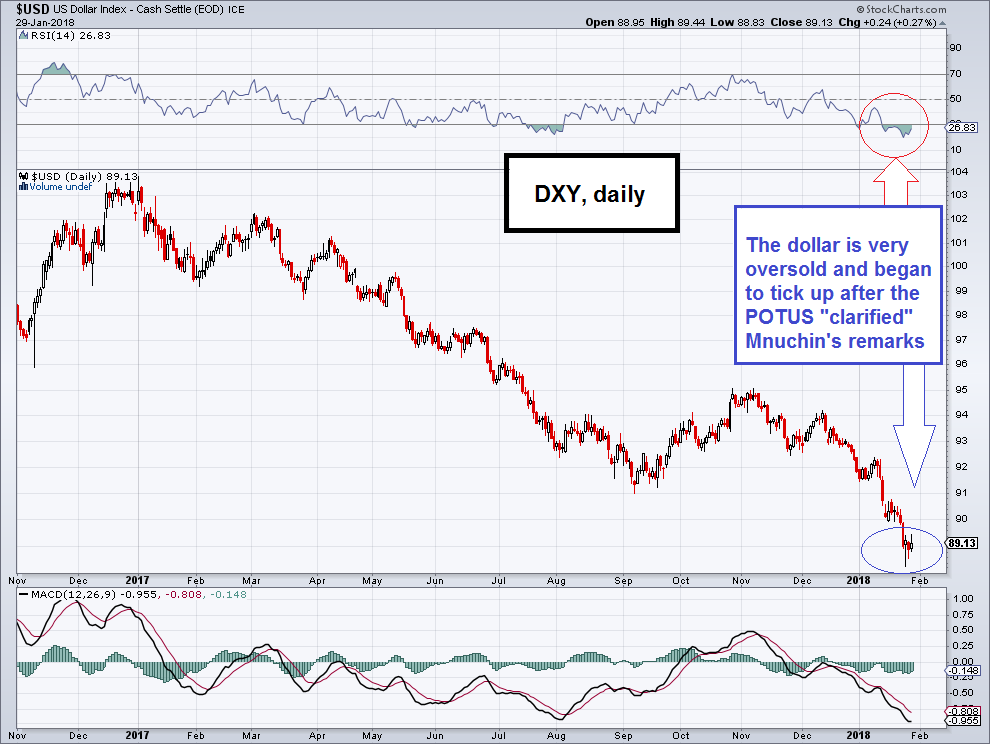 US dollar index, daily – from a technical perspective, the dollar was already more than ripe for a bounce when Mnuchin made his remarks. - Click to enlarge Currency trends tend to be very “sticky” though and at the moment it doesn’t look like it is getting “stronger and stronger”. |
Tags: central-banks,newslettersent,On Economy,On Politics










